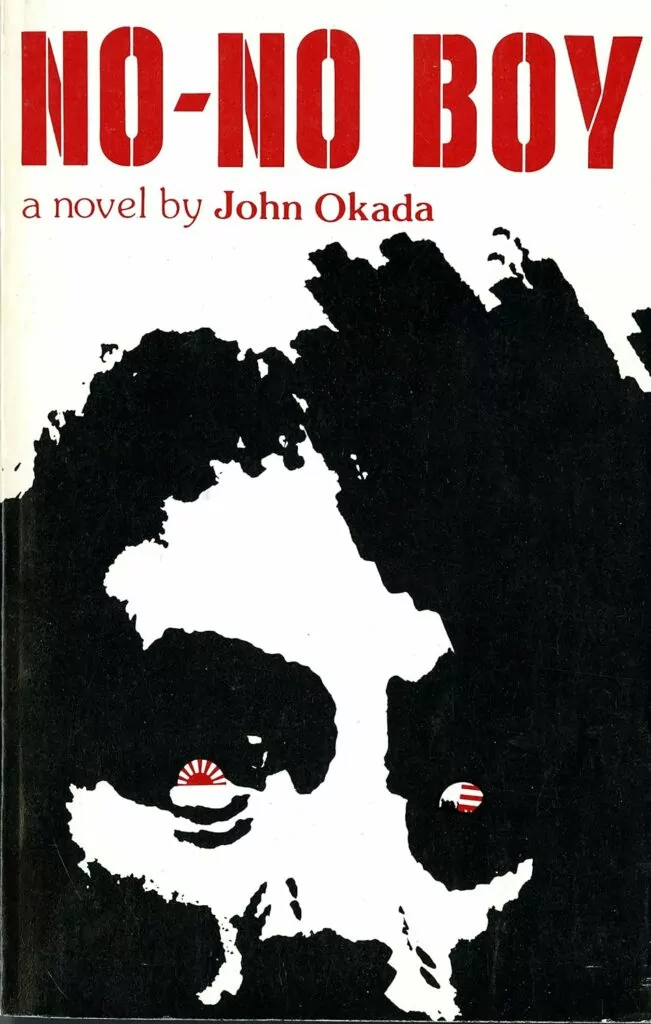Today, we’re diving into a profoundly significant piece of literature – “No-No Boy” by John Okada. Published in 1956, this novel holds the distinction of being the first Japanese American novel, bringing to light the nuanced and often turbulent experiences of Japanese Americans in the wake of World War II.
Through the eyes of Ichiro Yamada, a young man grappling with his identity and sense of belonging in post-war America, Okada masterfully explores themes of loyalty, family dynamics, and the societal aftermath of war. As we discuss this book, let’s consider not only the historical context but also how its themes resonate with contemporary issues of identity and belonging.
No-No Boy Summary
“No-No Boy,” authored by John Okada and first published in 1956, is a seminal work in Asian American literature, illuminating the complex and often painful experiences of Japanese Americans during and after World War II. The novel’s protagonist, Ichiro Yamada, is emblematic of the “no-no boys” – Japanese Americans who, during the war, answered “no” to two critical questions on a government loyalty questionnaire. These questions pertained to willingness to serve in the U.S. armed forces and to forswear allegiance to the Japanese emperor.
Ichiro’s refusal to affirm these commitments lands him in prison for two years, a decision driven by his deep-seated conflict over pledging loyalty to a country that had unjustly interned him and his family. On his return to Seattle, Ichiro confronts not only the external hostility of his community, who view his actions as traitorous, but also an intense internal struggle. He grapples with feelings of guilt, rage, and a profound sense of displacement in a society that remains largely hostile and unwelcoming to him and his family.
Ruth Ozeki, in her foreword, and Lawson Fusao Inada, in the introduction, highlight the novel’s significance as the first of its kind to delve into the Japanese American experience post-World War II. Frank Chin, in the afterword, further contextualizes the novel’s impact and legacy. The story challenges the then-prevalent “model-minority” stereotype of Japanese Americans, showcasing instead a community fractured by war, internment, and the complexities of identity and loyalty.
The re-publication of “No-No Boy” in the mid-1970s marked a resurgence of interest in this pivotal work, particularly among a new generation of Japanese American writers and scholars. This rekindled attention helped establish the novel as a powerful testament to the Asian American experience, providing nuanced insights into the struggles faced by this community in the mid-20th century.
The themes of “No-No Boy” – identity, loyalty, and the societal cost of war and discrimination – remain profoundly relevant, offering readers a poignant, introspective, and often painful window into a chapter of American history that continues to resonate in contemporary discussions about citizenship, belonging, and cultural heritage.
No-No Boy Characters
In “No-No Boy” by John Okada, several key characters play significant roles in unfolding the narrative and exploring the themes of identity, loyalty, and post-war struggles. Here’s a brief overview of the main characters:
- Ichiro Yamada: The protagonist of the novel, a young Japanese American man who becomes a “no-no boy” after refusing to serve in the U.S. military and swear loyalty to the United States during World War II. His stance results in a prison sentence and subsequent alienation from his community and family upon his return. Ichiro’s character is deeply conflicted, grappling with issues of identity, guilt, and belonging.
- Mr. and Mrs. Yamada: Ichiro’s parents, who are also deeply impacted by the war and internment. His mother is particularly unable to accept the defeat of Japan and lives in denial, which creates a tense and challenging dynamic within the family.
- Kenji Kanno: A close friend of Ichiro, Kenji serves as a counterpoint to Ichiro’s experiences. Despite being injured in the war while serving in the U.S. military, Kenji maintains a more optimistic and reconciliatory outlook, offering a different perspective on loyalty and identity.
- Taro Yamada: Ichiro’s younger brother, who represents the younger generation of Japanese Americans. Taro’s views and choices contrast sharply with Ichiro’s, highlighting generational differences and evolving attitudes within the Japanese American community.
- Emi: A young woman whom Ichiro becomes close to. Emi’s character provides insight into the experiences of Japanese American women during this period and her interactions with Ichiro offer a glimpse into the varied personal responses to the war and internment.
- Freddie: Another Japanese American who, like Ichiro, struggles with his identity and place in post-war American society. His character reflects the anger and frustration felt by many young Japanese Americans of that era.
No-No Boy Book Club Questions
Here are some thought-provoking questions you could use:
- Character Analysis of Ichiro Yamada: How does Ichiro’s identity crisis reflect the broader experience of Japanese Americans post-World War II? Discuss how his struggle with loyalty and belonging evolves throughout the novel.
- Historical Context: How does the novel deepen your understanding of the Japanese American experience during and after World War II, especially in terms of internment and societal attitudes?
- Themes of Loyalty and Identity: Discuss the theme of loyalty in the novel. How do different characters exhibit or struggle with loyalty—to their country, their family, or their personal beliefs?
- Impact of War on Family Dynamics: How does Ichiro’s family represent the varied responses of Japanese Americans to the war’s aftermath? What do you think Okada is trying to convey through the dynamics in the Yamada family?
- Generational Differences: How do the generational differences manifest in the novel, particularly through characters like Taro, Ichiro’s younger brother? What do these differences say about the evolving identity of Japanese Americans?
- Role of Female Characters: Consider the roles of female characters like Emi in the story. How do they contribute to the narrative and what do their experiences reveal about the gender dynamics of the time?
- The Concept of the “No-No Boy”: Discuss the concept of the “no-no boy” and its implications. How does this label affect Ichiro and others who made similar choices?
- Kenji Kanno’s Outlook: How does Kenji’s character and his experiences as a war veteran contrast with Ichiro’s? What does Kenji represent in the novel?
- The Novel’s Ending: What are your thoughts on the novel’s conclusion? Were there aspects that surprised you or left you with unanswered questions?
- Relevance Today: How do the issues raised in “No-No Boy” resonate with current discussions about immigration, citizenship, and cultural identity in modern society?
Related: Of Mice and Men Summary, Quotes, and Book Club Questions
Final thoughts
Ichiro’s journey and the struggles of those around him have given us a window into a pivotal moment in American history and the ongoing dialogue about cultural heritage and citizenship. This novel not only serves as a testament to a specific historical experience but also challenges us to reflect on current societal issues. As we close, I hope this discussion has not only deepened your understanding of the novel but also inspired you to think about the ongoing impact of history on present-day narratives of belonging and identity.







